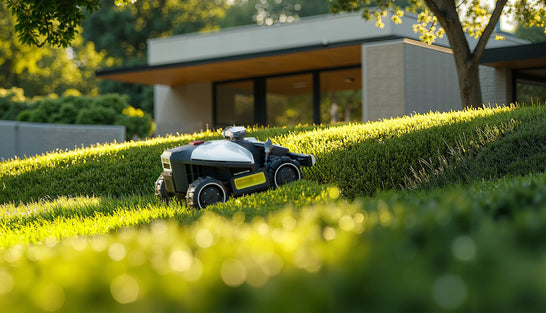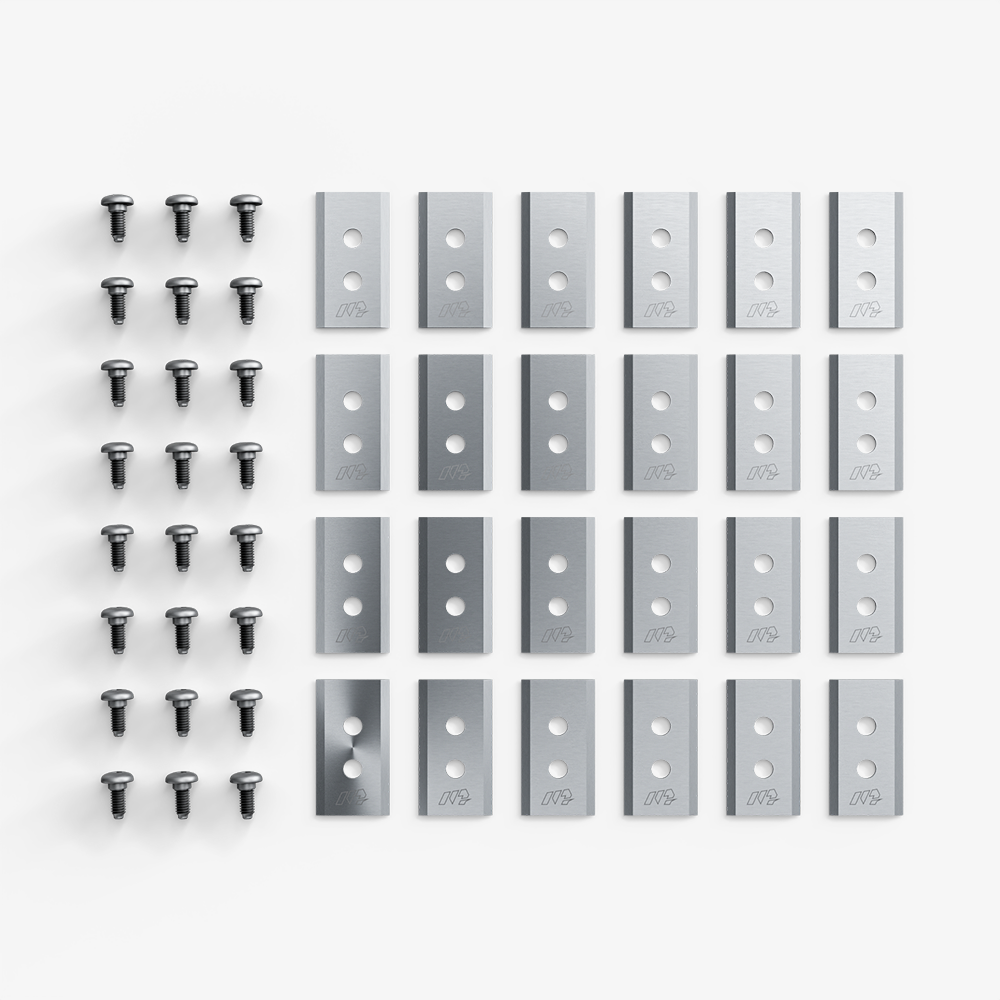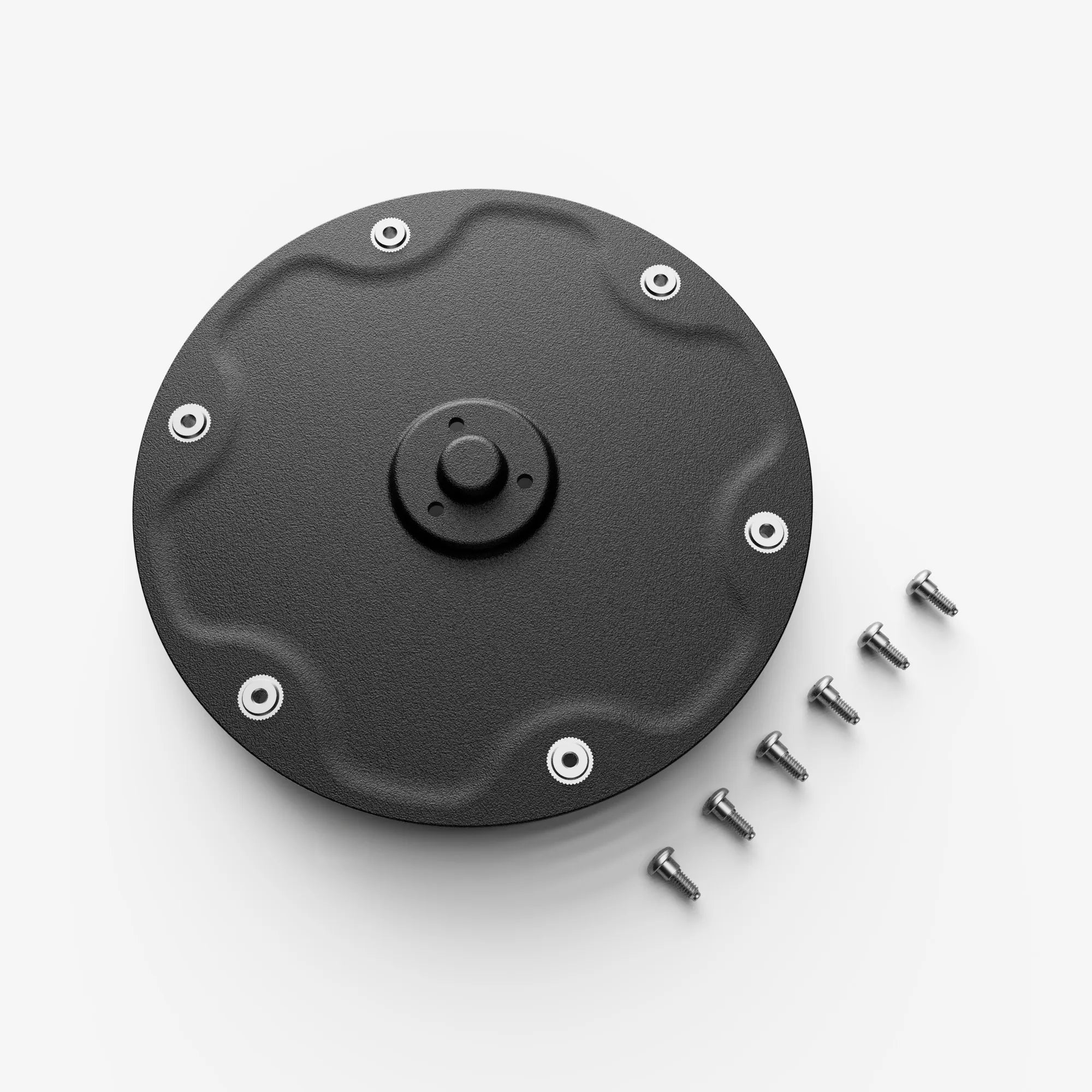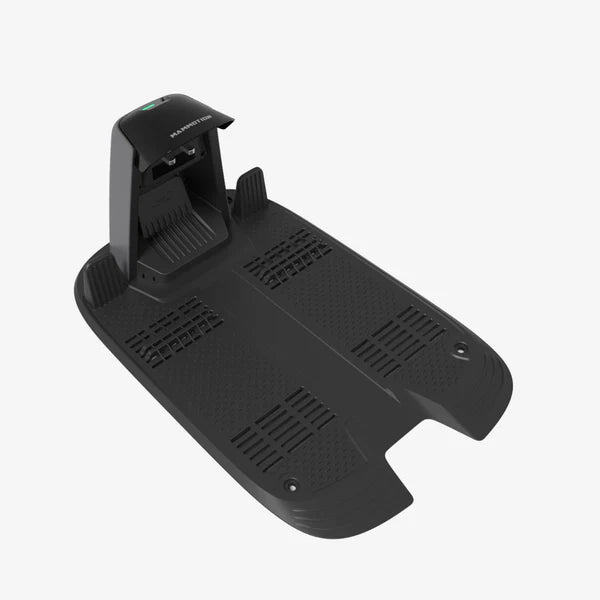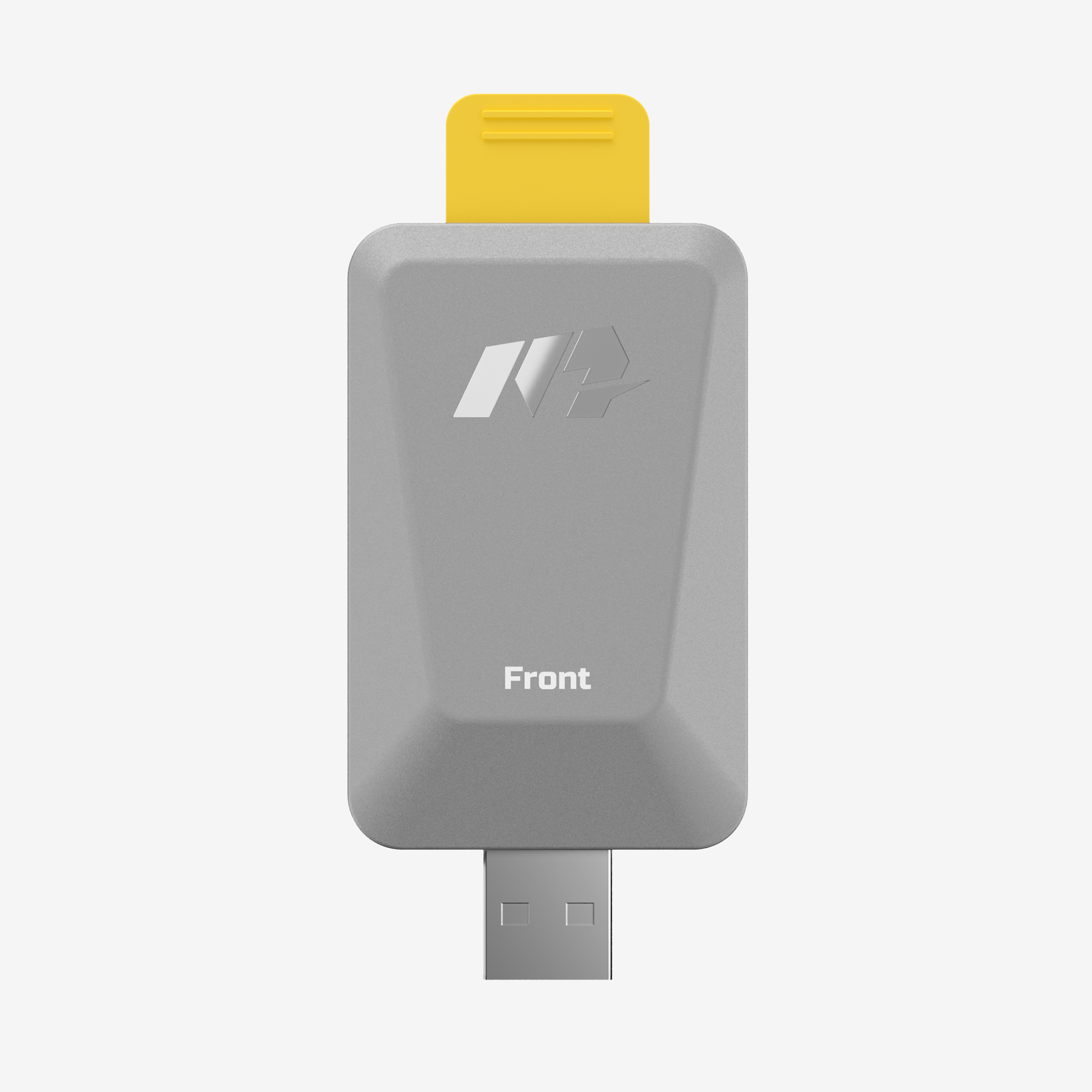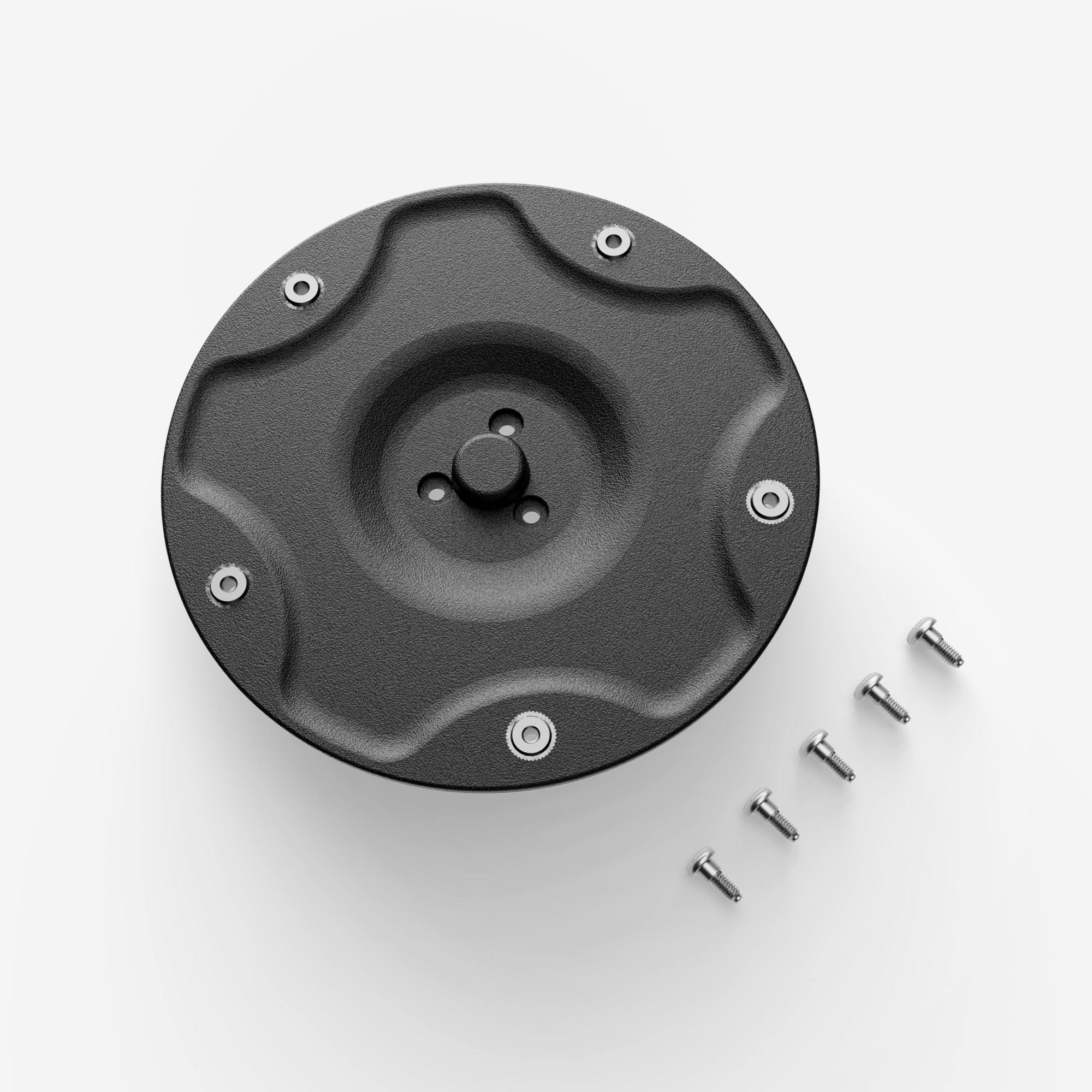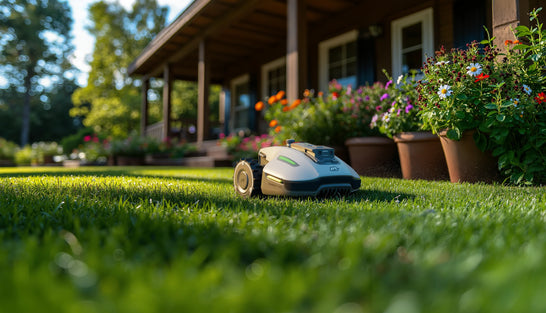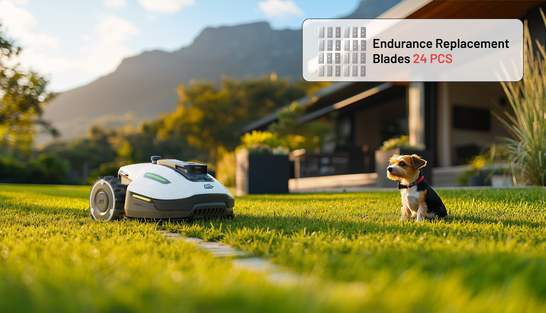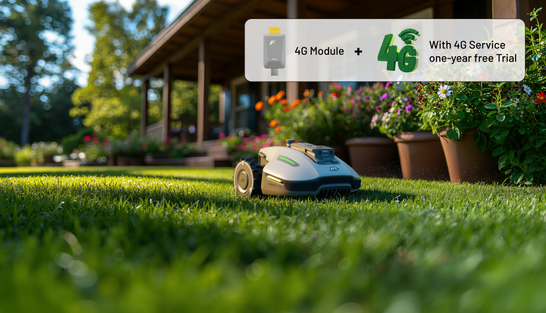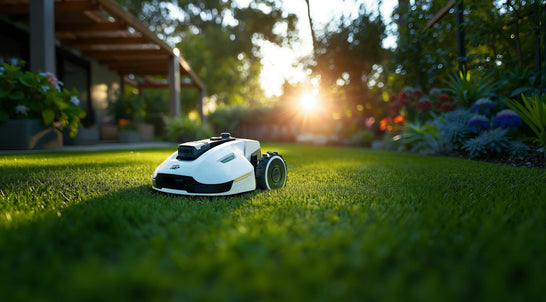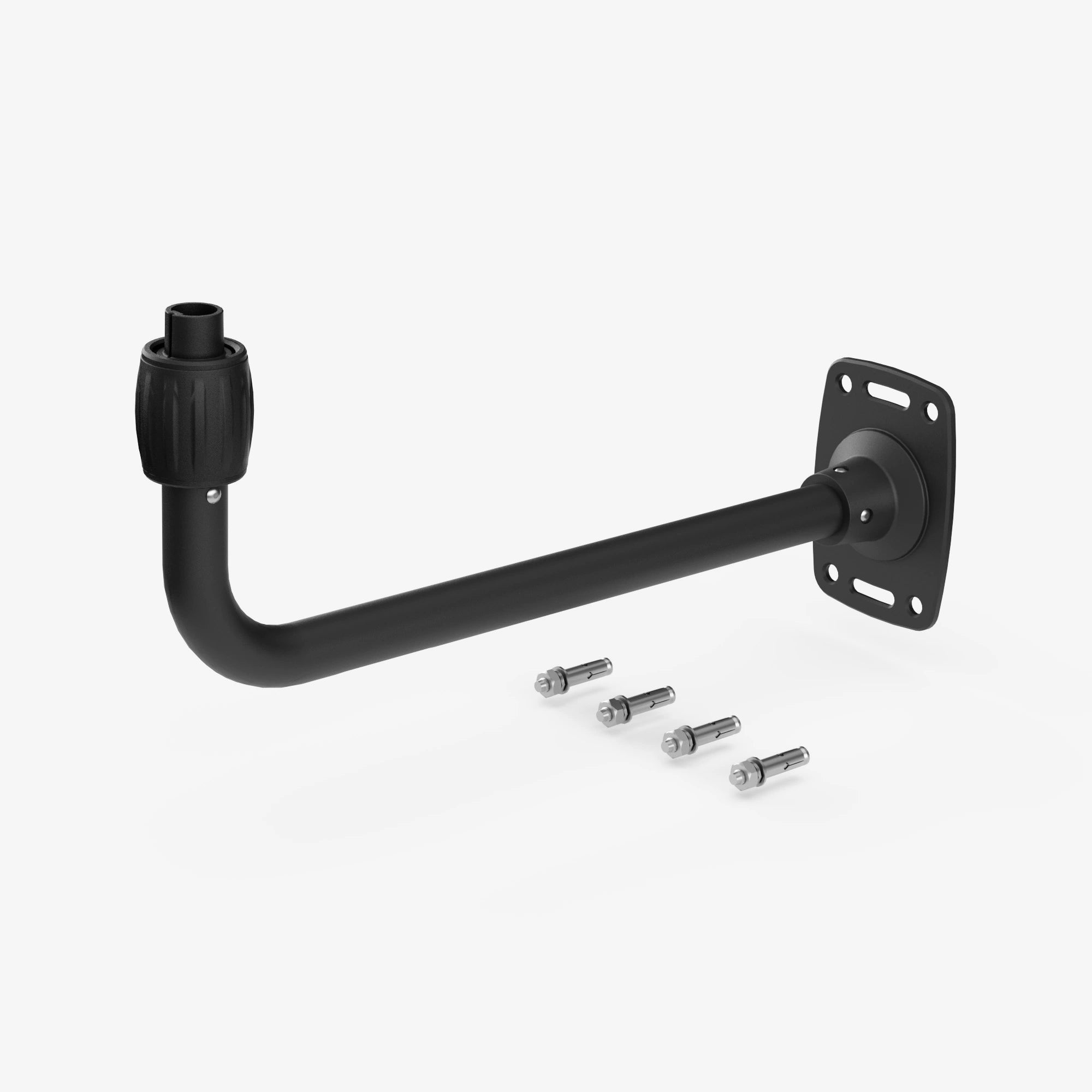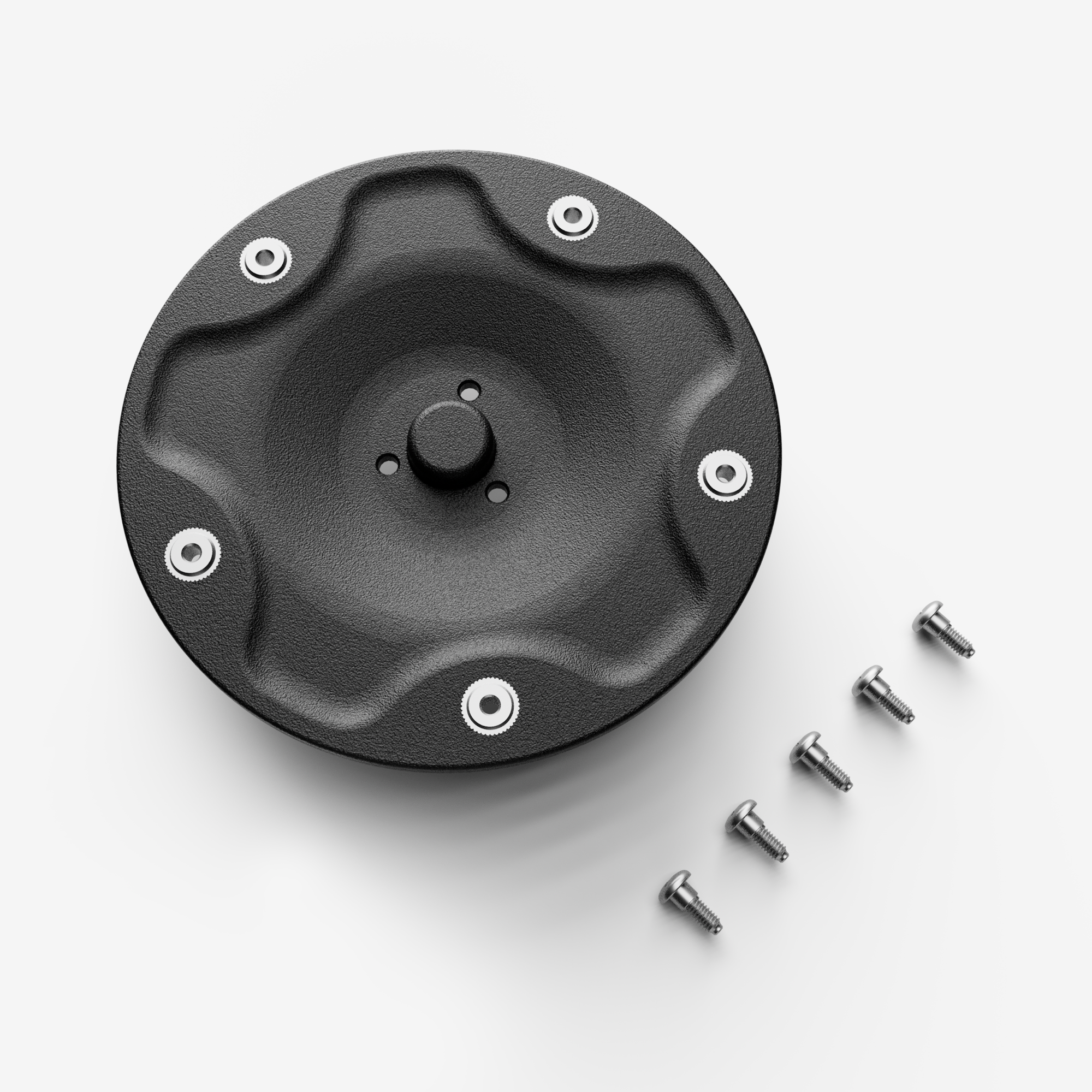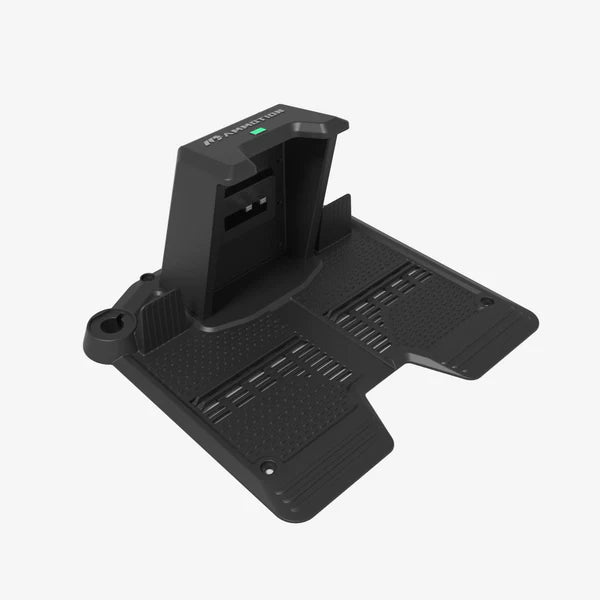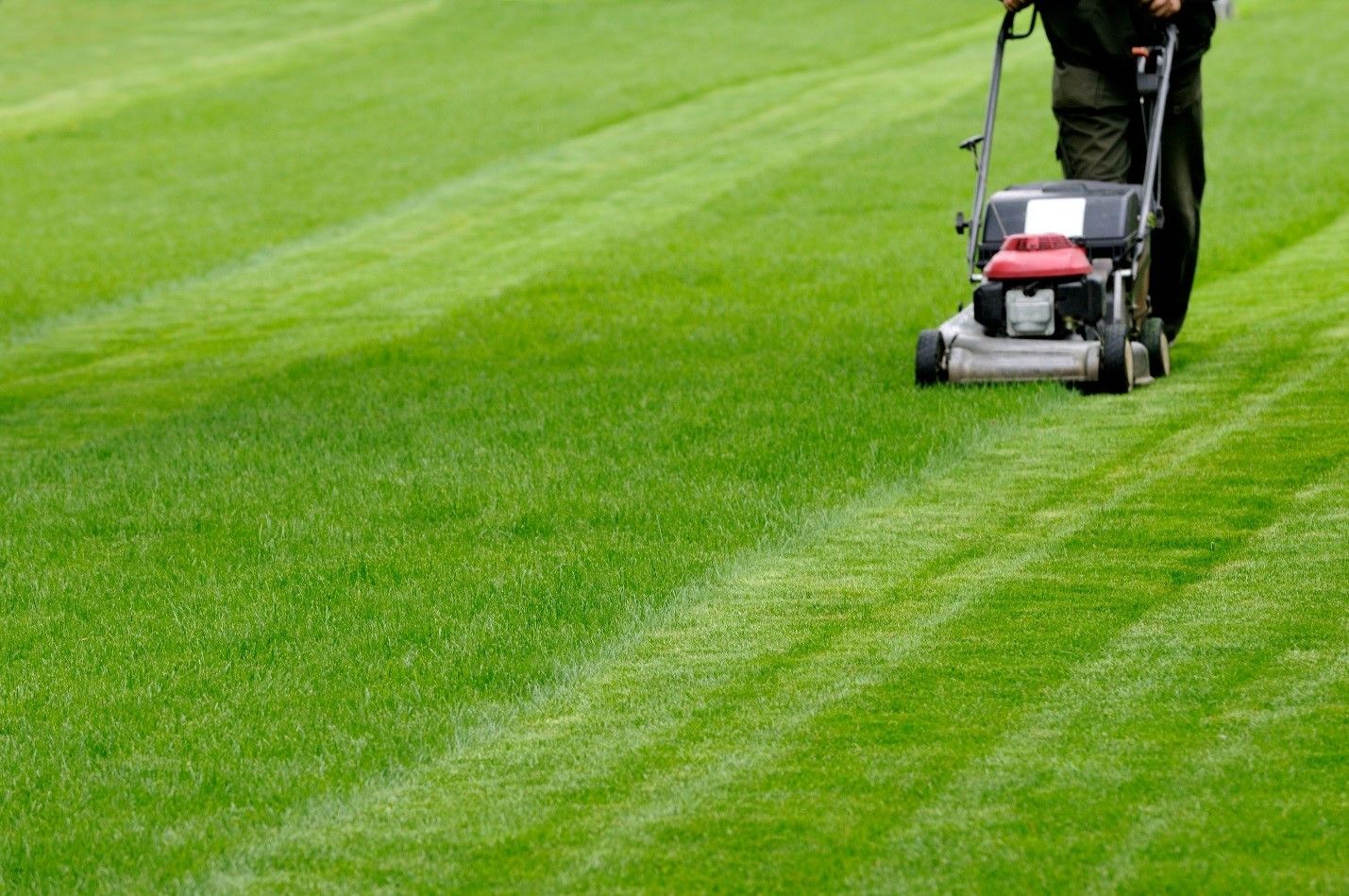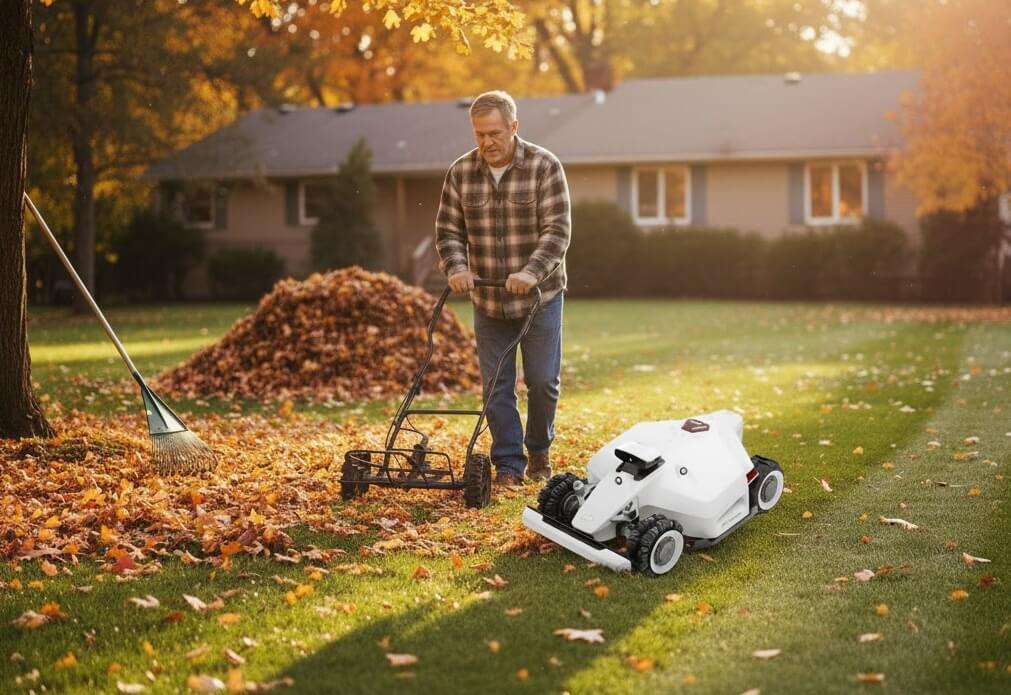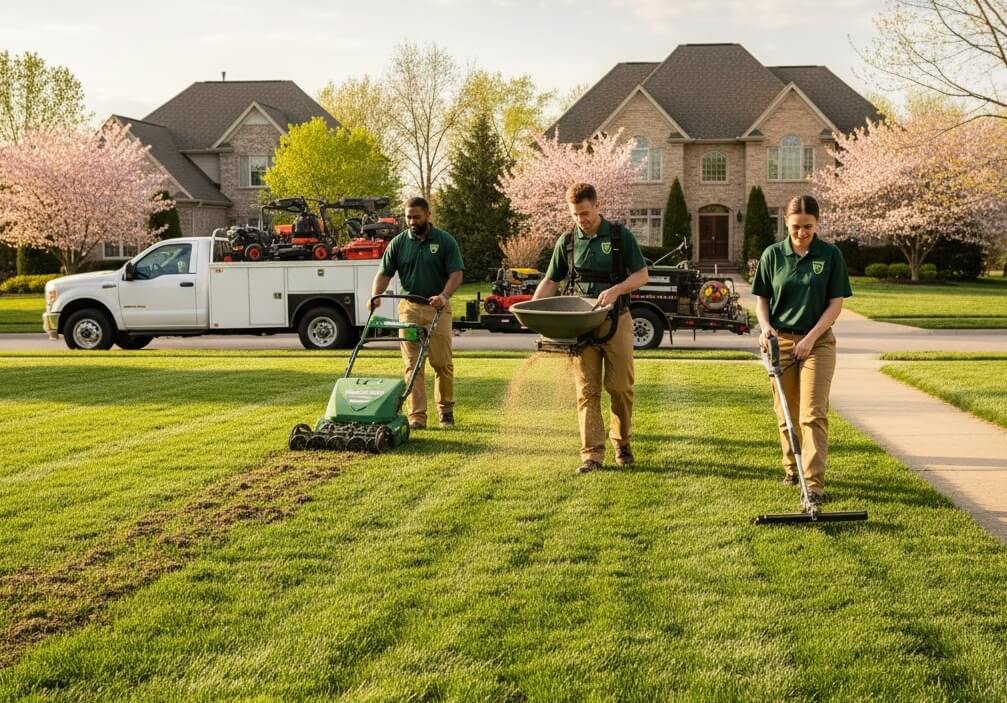Quick Answer: How Often Should You Mow Your Lawn?
If you're looking for a quick rule of thumb, most lawns should be mowed once every 5 to 7 days during the active growing season. But the real answer depends on several factors—like your grass type, the time of year, and recent weather conditions.
The most important rule to follow? Never remove more than one-third of the grass blade’s height at once. This is known as the “one-third rule,” and it helps prevent stress, thinning, and disease.
Here’s a general guideline based on grass type and season:
- Cool-season grasses (like Kentucky bluegrass or fescue): Mow once every 5–7 days in spring and fall. Growth slows in summer, so you may reduce frequency.
- Warm-season grasses (like Bermuda or Zoysia): Mow every 3–5 days in peak summer, when growth is most aggressive.
If you're using a robot mower, like the Mammotion LUBA 2 AWD, you can mow more frequently but remove less each time. This “little and often” approach keeps your lawn healthier with less effort on your part.
So rather than sticking to a strict calendar, watch your grass height, follow the one-third rule, and adjust as needed. In the long run, that will give you a greener, thicker, more resilient lawn.
What Affects Your Mowing Frequency?
There’s no one-size-fits-all schedule when it comes to mowing. The right mowing frequency depends on your grass type, local climate, the time of year, and even the kind of mower you use. Here’s what really makes the difference:
1. Grass Type
Not all grasses grow the same. Some grow faster and need more frequent mowing.
Cool-season grasses (like Kentucky bluegrass, perennial ryegrass, and fescue): Grow quickly during spring and fall. Expect to mow about once a week, sometimes more in peak conditions.
Warm-season grasses (like Bermuda, St. Augustine, and Zoysia): Hit their stride in late spring through summer, often requiring mowing every 3–5 days when growth peaks.
Tip: If you're unsure what type of grass you have, check with a local garden center or extension office—they can help you identify it and set the right mowing expectations.
2. Time of Year
Grass growth varies dramatically throughout the year:
- Spring & early summer: This is peak season for most lawns. Expect to mow weekly or more depending on rainfall and sunlight.
- Mid to late summer: Growth often slows due to heat or drought. You may reduce mowing to every 10–14 days, especially if the lawn is stressed.
- Fall: A second growth burst often happens, especially in cool-season lawns. Resume regular mowing until growth naturally stops.
- Winter: In most regions, mowing isn’t needed unless you’re in a warm climate where grass grows year-round.
3. Weather Conditions
- Rainy weeks = faster growth. You may need to mow more often.
- Hot, dry weather = slower growth. Avoid mowing stressed grass; let it rest until conditions improve.
4. Lawn Appearance Goals
- Want a clean, golf-course look? You’ll need to mow more often and maintain a shorter cutting height.
- Prefer a natural, lower-maintenance lawn? Let the grass grow a bit taller—just follow the one-third rule to avoid stressing the turf.
5. Mower Type
How you mow matters just as much as how often:
- Manual & push mowers usually mean mowing less often, but that can backfire—these tools don’t handle tall grass well.
- Self-propelled or ride-on mowers give you more power and flexibility, allowing you to handle slightly overgrown areas.
- Robot mowers, like the Mammotion LUBA 2 AWD, shine when it comes to mowing frequency. These devices trim small amounts daily or every few days, keeping your lawn in the ideal height range automatically.
How to Know If You’re Mowing Too Often or Not Enough
Even with the best intentions, it’s easy to get your mowing schedule wrong. So how can you tell if you’re mowing too often—or not often enough? Your lawn gives off clear signs. You just need to know what to look for.
Signs You’re Not Mowing Often Enough:
If you’re going too long between cuts, your lawn may start to show:
- Clumps of wet or long grass clippings left behind after mowing
- Scalping, where your mower suddenly chops too low and exposes stems or soil
- Patchy, thin areas—overgrown grass weakens density and makes room for weeds
- Slower recovery after each mow, especially in warm weather
Over time, letting grass grow too tall and then cutting it all at once stresses the plant. This shocks the root system and increases the risk of disease, drought damage, and weed invasion.
Signs You’re Mowing Too Often:
On the flip side, cutting your lawn too frequently—especially too short—can cause just as much trouble:
- Yellow or brown tips, especially during hot spells (a sign of stress or dull blades)
- Thinning turf or bald patches where grass hasn’t had time to recover
- Excessive thatch buildup, which can choke roots and block moisture
Remember: mowing more isn’t always better. It’s about timing it right. Stick to the one-third rule, and adapt based on your grass type, season, and weather.

Best Mowing Strategies for a Healthy Lawn
Mowing isn’t just about keeping your yard looking tidy—it’s one of the most important things you can do to support a healthy, resilient lawn. Done correctly, mowing encourages thicker grass, discourages weeds, and helps your turf survive heat, drought, and disease.
Follow the One-Third Rule, Always
This rule can’t be overstated: never cut more than one-third of the grass blade in a single mow. Cutting too much at once shocks the plant, damages roots, and invites stress-related problems like browning, scalping, or pest damage.
Understand Grass Growth Cycles
Your lawn’s growth changes with the seasons—and your mowing strategy should adapt:
- Spring: Peak growth for most grasses. Mow regularly to train lateral growth.
- Summer: Growth slows in heat. Let grass grow slightly taller to protect roots from sun and retain moisture.
- Fall: Growth picks up again; return to a consistent mowing routine.
- Winter: Most lawns go dormant. Avoid mowing unless the grass is actively growing.
Watch Out for Scalping
Scalping happens when you cut the grass too low, exposing stems or even soil. This weakens your turf, increases water loss, and gives weeds space to take hold.
To avoid it:
- Keep your mower blades sharp
- Raise the cutting height during hot or dry spells
- Stick to gradual trims instead of big cuts
Recognize Dormancy
If your grass has turned brown or stopped growing, don’t assume it’s dead—it might just be dormant due to drought or seasonal changes. In this state, mowing can do more harm than good. Pause mowing until active growth resumes.
How Your Lawn Mower Affects Mowing Frequency
The type of mower you use plays a big role in how often you should mow. Different machines come with different capabilities—and that directly affects the health and maintenance needs of your lawn. Whether you’re walking behind a manual reel mower or relying on an advanced robotic system, your mowing strategy should align with your tool.
Manual Push Mowers
Manual reel mowers are quiet, eco-friendly, and ideal for small, flat lawns. But they require frequent mowing to perform well. Long or thick grass quickly overwhelms them, making mowing harder and less effective.
Recommended mowing frequency:
- Every 3–5 days during peak growing season
- Keep grass short and consistent to avoid jamming or uneven cuts
Self-Propelled & Ride-On Mowers
These powered mowers can cover more ground and handle taller grass, which tempts many homeowners to mow less often. But waiting too long still causes problems—thick clumps, stressed turf, and missed blades.
Best practices:
- Stick to the one-third rule, even if your mower can “handle” overgrowth
- Avoid mowing wet or overgrown grass in a single session
Robotic Lawn Mowers
Smart mowers like the Mammotion LUBA 2 AWD change the game entirely. Instead of cutting infrequently and aggressively, these robots trim your lawn in small amounts every day or every few days. This “little and often” strategy keeps grass healthier with minimal effort.
Why robotic mowing works:
- Maintains consistent grass height without stress
- No clumps, less thatch buildup, and a denser lawn
- Ideal for uneven terrain or sloped yards thanks to AWD traction
- Fully autonomous—no scheduling guesswork
Match the Tool to Your Lawn’s Needs
Don’t fight your equipment—adapt to it. If you’re using a manual or ride-on mower, be proactive about cutting before the grass gets too tall. If you’ve got a smart mower, take advantage of its ability to handle the routine for you.
In short: the right mower makes proper mowing easier. But the wrong mowing schedule—even with the best equipment—can still damage your lawn.
Make It Easier: Use a Smart Mower to Do It For You
Let’s face it—keeping up with mowing schedules, weather changes, and grass height isn’t for everyone. If you’re tired of tracking growth or adjusting your weekend plans around lawn care, there’s a smarter solution: let technology handle it for you.
Why a Smart Mower Makes Lawn Care Easier
A robotic mower like the Mammotion LUBA 2 AWD follows the “little and often” method automatically. Instead of tackling overgrown grass once a week, it trims lightly and frequently—keeping your lawn in peak condition without over-stressing the turf. Unlike traditional mowers, LUBA 2 can:
- Mow daily or every few days to maintain optimal height
- Avoid scalping by making gentle, precise passes
- Handle slopes and uneven ground with its all-wheel-drive design
- Eliminate manual planning—it adapts to your lawn’s needs in real time
Real-Life Pain Points, Solved
- Don’t know when to mow? It decides for you.
- Tired of pushing a heavy mower in summer heat? LUBA 2 does the work.
- Live on a hill or rough terrain? LUBA 2 handles it effortlessly.
- Want a sharp, consistent cut every time? It keeps blades sharp and settings smart.
The Bottom Line
Smart mowing saves time, improves lawn health, and eliminates guesswork. Whether you're a perfectionist or just want to keep things tidy without the hassle, a robotic mower like LUBA 2 AWD makes lawn care truly effortless.
Final Tips + Recap Checklist
Healthy lawn care doesn’t require endless effort—it just takes the right habits and a little consistency. Whether you’re mowing by hand or letting a robot do the job, here are the key points to remember:
✅ Recap Checklist for Smart Mowing
- Follow the one-third rule: Never remove more than one-third of the grass height in a single mow.
- Adjust frequency with the season: Grass grows faster in spring and summer, slower in fall and drought.
- Keep mower blades sharp: Clean cuts help prevent disease and brown tips.
- Match the mower to your goals: Manual, ride-on, or robotic—each has its strengths.
- Watch your lawn, not the calendar: Grass growth, not a fixed schedule, should drive your mowing.
- Robot mowers support the "light and frequent" strategy: Especially effective for consistent, low-stress maintenance.
One Final Thought
Mowing isn’t just about appearances—it’s about building a healthier, stronger lawn over time. With the right approach, your lawn can thrive with less stress and less work. Ultimately, how often you should mow your lawn depends on a mix of factors, but with the right strategy, consistency, and maybe even a smart mower, your lawn will thank you.
And if you're ready to take mowing off your to-do list entirely, a smart mower can handle the routine, precision, and terrain—all on its own.
Frequently Asked Questions
1. How often should I mow my lawn during the summer?
During the summer, you should mow your lawn once every 5–7 days if your grass is growing fast. However, adjust the frequency based on your grass type and weather conditions. If it's particularly hot or dry, you can mow less frequently.
2. Can I mow my lawn too often?
Yes, mowing too frequently can stress the grass and prevent proper recovery. Aim to mow when the grass reaches about one-third taller than its desired height, following the one-third rule to keep the lawn healthy.
3. What happens if I cut too much grass in one mow?
Cutting more than a third of the grass height at once can shock the grass, leading to weak regrowth and possible scalping. This makes the lawn more susceptible to diseases and weeds.
4. How do I know if my mower blades need sharpening?
If your grass tips appear torn or ragged instead of cleanly cut, it's a sign that your mower blades need sharpening. Dull blades tear the grass, causing it to become more vulnerable to pests and diseases.
5. Can robot mowers help reduce mowing frequency?
Yes, robot mowers like the Mammotion LUBA 2 AWD are designed to mow more frequently and more gently, keeping your lawn consistently healthy with smaller, more regular cuts, so you don't have to worry about mowing too often.
6. Should I adjust mowing frequency based on my mower type?
Definitely. With manual push mowers, you'll need to mow more often, whereas self-propelled or robot mowers can handle longer intervals. The key is to adapt your schedule to the mower's capabilities.
7. What is the one-third rule in lawn mowing?
The one-third rule is simple: never cut more than one-third of the grass height at once. This helps maintain the health of the grass by reducing stress and promoting healthy regrowth.
8. How do weather conditions affect my mowing schedule?
Rain accelerates grass growth, so you may need to mow more often. During dry spells or drought, growth slows, and you can extend the time between mows. Always adjust based on the weather to avoid over-cutting or scalping.

